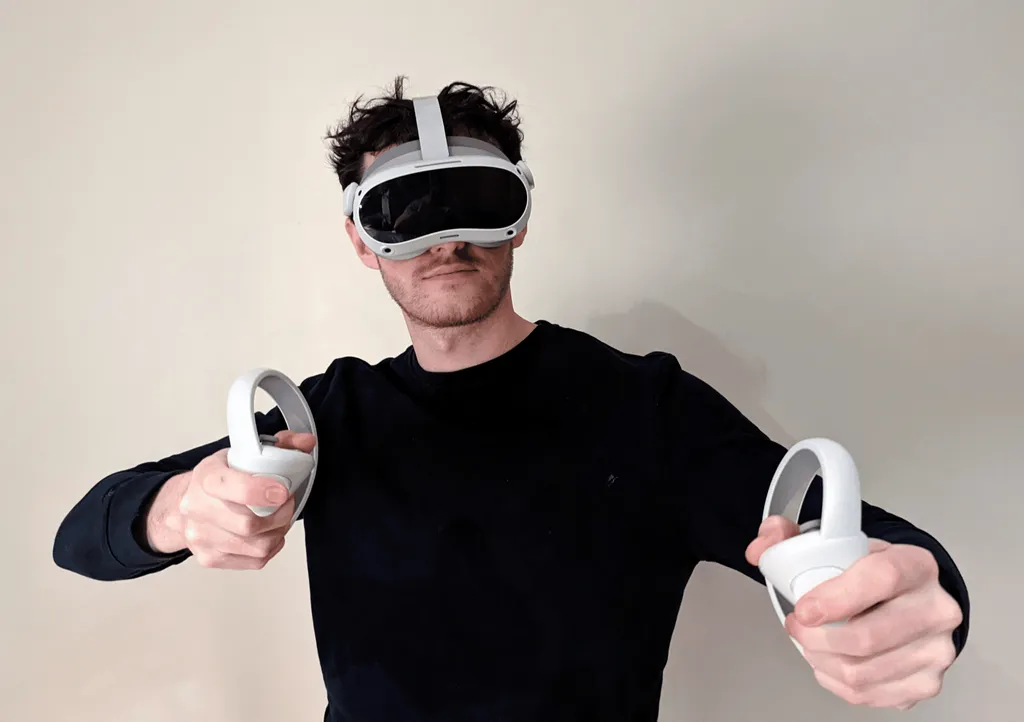Pico 4 ships today, and we’ve had a chance to put it through its paces over the past few weeks.
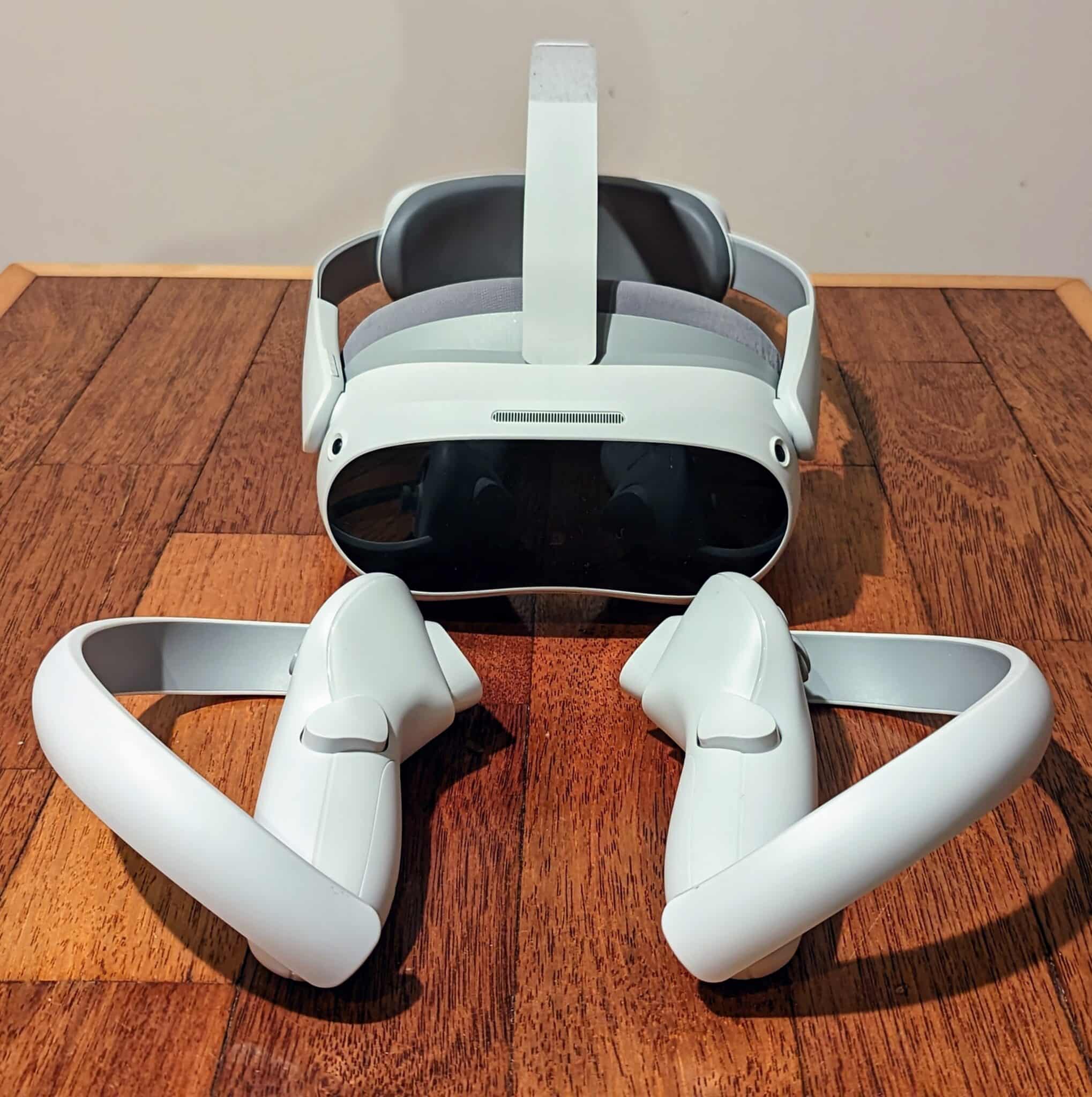
Pico is no newcomer to VR – it revealed its first headset in 2016. Last year it was acquired by ByteDance, the Chinese tech giant behind TikTok. Pico has always sold to Chinese consumers but focused on businesses elsewhere. This changed earlier this year with the launch of Pico Neo 3 Link to European consumers. But it was pitched as a “beta program” with the company teasing a successor by offering a discount on it to Neo 3 Link buyers. That successor is Pico 4.
Preorders opened for Pico 4 last month, and the company hasn’t been able to ship them all for launch due to “unprecedented global demand”. Global here refers to Europe, Japan, South Korea, and China – Pico 4 isn’t sold in North America or Australia & New Zealand.
Much of the discussion so far about Pico 4 has centered on the on-paper technical specs. We have a rundown of those with a comparison to Quest 2 already. But in this review, I’m going to talk about the experience those specs create when they all come together, what the device is like in real usage, and whether or not you should actually buy one instead of a Quest 2.
Comfort & IPD
The first thing you’ll notice about Pico 4 is its slimmer & lighter visor. Whereas Quest 2’s visor weighs 470 grams without straps, Pico 4 without straps is almost 40% lighter at 295 grams. I give the weight of the visor (the front) rather than the overall headset because that’s what you actually feel pressing against your face.
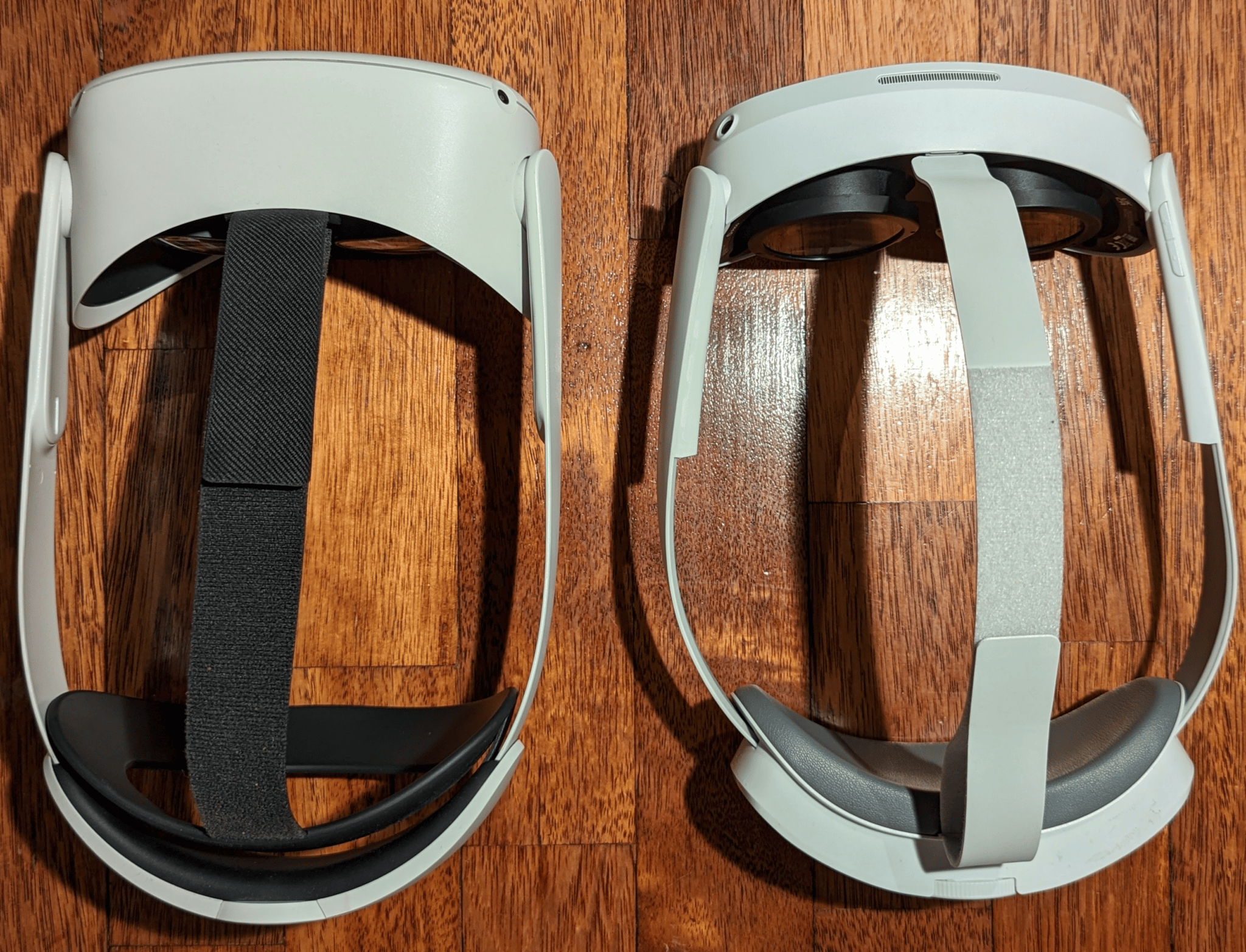
Pico 4’s rigid strap is similar to Quest 2’s Elite Strap accessory and has the battery built into the rear – part of the reason the visor is lighter. This balances the weight significantly better than the default flimsy elastic strap that gives Quest 2 its front-heavy feeling out of the box. The downside to Pico 4’s strap is that it’s not removable, so you can’t choose a 3rd party alternative.
The combination of the lighter visor and the battery as a rear counterbalance weight makes a dramatic difference to comfort. It no longer feels like a brick strapped to your face. Frankly, Quest 2 just looks and feels antiquated next to Pico 4. It’s noticeably boxier and heavier.
Pico 4’s facial interface material also feels much gentler on your face. It’s the same kind of breathable fabric that was used for Oculus Go, rather than the cheap-feeling face-hurting foam that comes with Quests.
With Quest 2 you need multiple accessories to make it comfortable: a proper strap and a replacement facial interface. Pico 4 is comfortable out of the box – it’s a refreshing change.
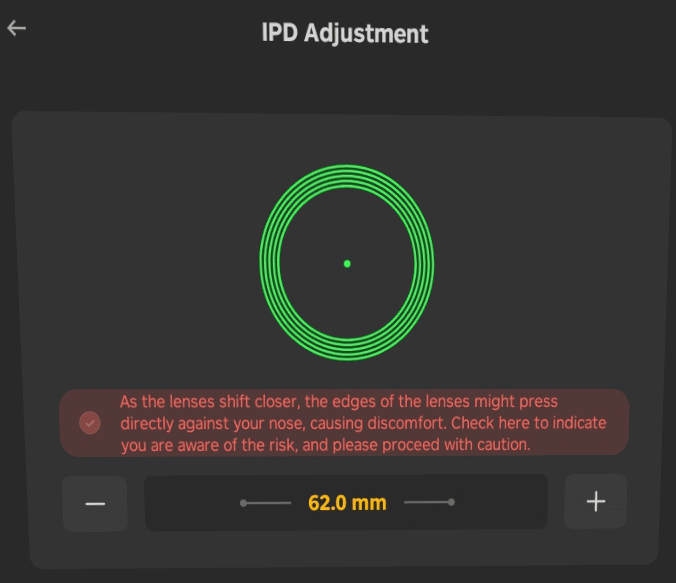
There is however a major issue with Pico 4’s comfort – but it only affects some people. Pico 4 has continuous lens separation adjustment to theoretically support a wide range of interpupillary distances (IPDs), which is great for visual comfort. But while the lenses can get as close as 58mm, there’s a good reason the spec sheet only claims support for 62mm – 72mm. To set the IPD below 62mm you need to accept a notice warning you that the lenses might “press directly against” your nose.
Trying this out, the nose-crushing was so uncomfortable I would actually describe it as a design flaw. If your IPD is over 62mm you won’t even notice this flaw exists, but if it’s below I really don’t recommend buying Pico 4.
Field Of View & Visuals
So yeah, the lenses are so big they crush the nose of people with a narrow IPD. But their size also delivers my favorite aspect of Pico 4: the field of view. It’s both wider and taller than Quest 2, and it’s instantly noticeable.
Field of view is arguably the single biggest driver of immersion in VR, and after years of stagnation in affordable headsets, I’m glad Pico is finally bucking the trend.
| Headset | Horizontal Field of View | Vertical Field of View |
| Quest 2 | Up to 96° | 96° |
| Quest Pro | 106° | 96° |
| Pico 4 | 105° | 105° |
Interestingly, Meta’s CTO was right: the field of view being taller is actually more impactful than it being wider. Ironically, Quest Pro’s field of view is as wide as Pico 4 but not as tall. I haven’t yet received a Quest Pro review unit, but based on my initial impressions I suspect Pico 4 will be my wireless PC VR driver due to the vertical field of view alone. Quest 2 just feels claustrophobic in comparison.
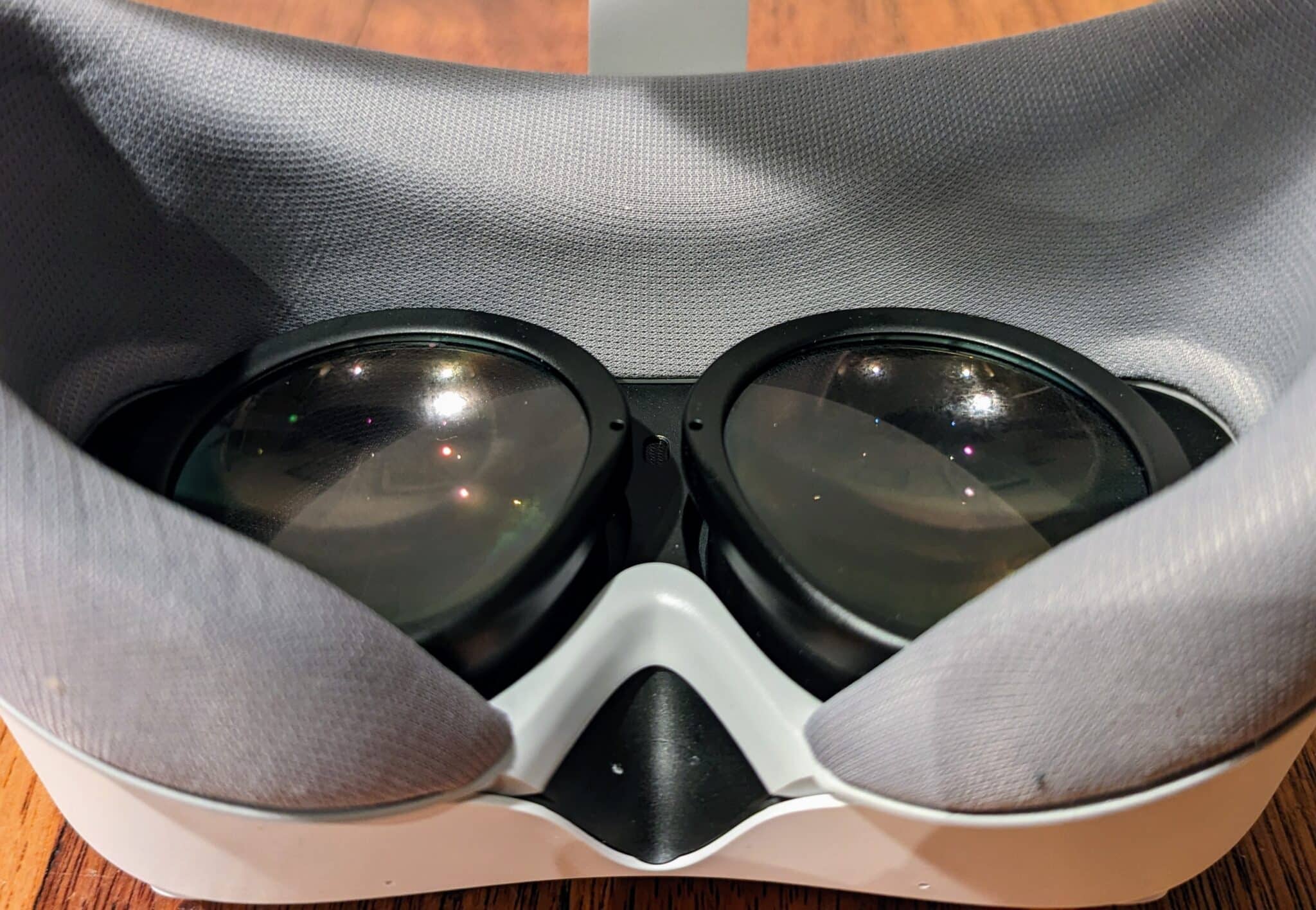
But the Pico 4 lenses don’t just have a larger field of view. They’re pancake lenses, sharper in both the center and periphery compared to the fresnel lenses used in Quest 2. They still exhibit lens glare, but the effect is reduced.
Combined with the higher resolution panels, the overall clarity is a noticeable step up from Quest 2.
The downside to Pico 4’s optical system is the display looks dull and slightly washed out. When I tried Quest Pro I was impressed by the contrast and colors compared to Quest 2, but Pico 4 is the opposite in both regards – a step back. Some people seem to think the only spec of a display is resolution, but that’s not true.
Performance & Tracking
The problem with Pico 4’s higher resolution and larger field of view is that it’s powered by the same old Snapdragon XR2 Gen 1 chipset used in Quest 2. The result of asking the same chip to render more pixels and more geometry each frame is somewhat predictable: performance issues.
In some games that run at a buttery smooth 90 frames per second on Quest 2, such as Superhot VR, I experienced frame drops on Pico 4. This could probably be remedied by Pico reducing the default render resolution, or maybe developers just need more time to tweak their titles. But as someone who doesn’t get motion sick from locomotion but does from frame drops, the result is the same: it makes me feel slightly sick. Standalone VR’s main bottleneck is current chips, not current displays, and Pico 4 proves this.
Perhaps this is the reason Pico 4’s refresh rate is 72Hz by default, and 90Hz is an experimental option, as 120Hz was on Quest 2. Other than the frame drops though, I didn’t notice any technical issues with 90Hz mode.
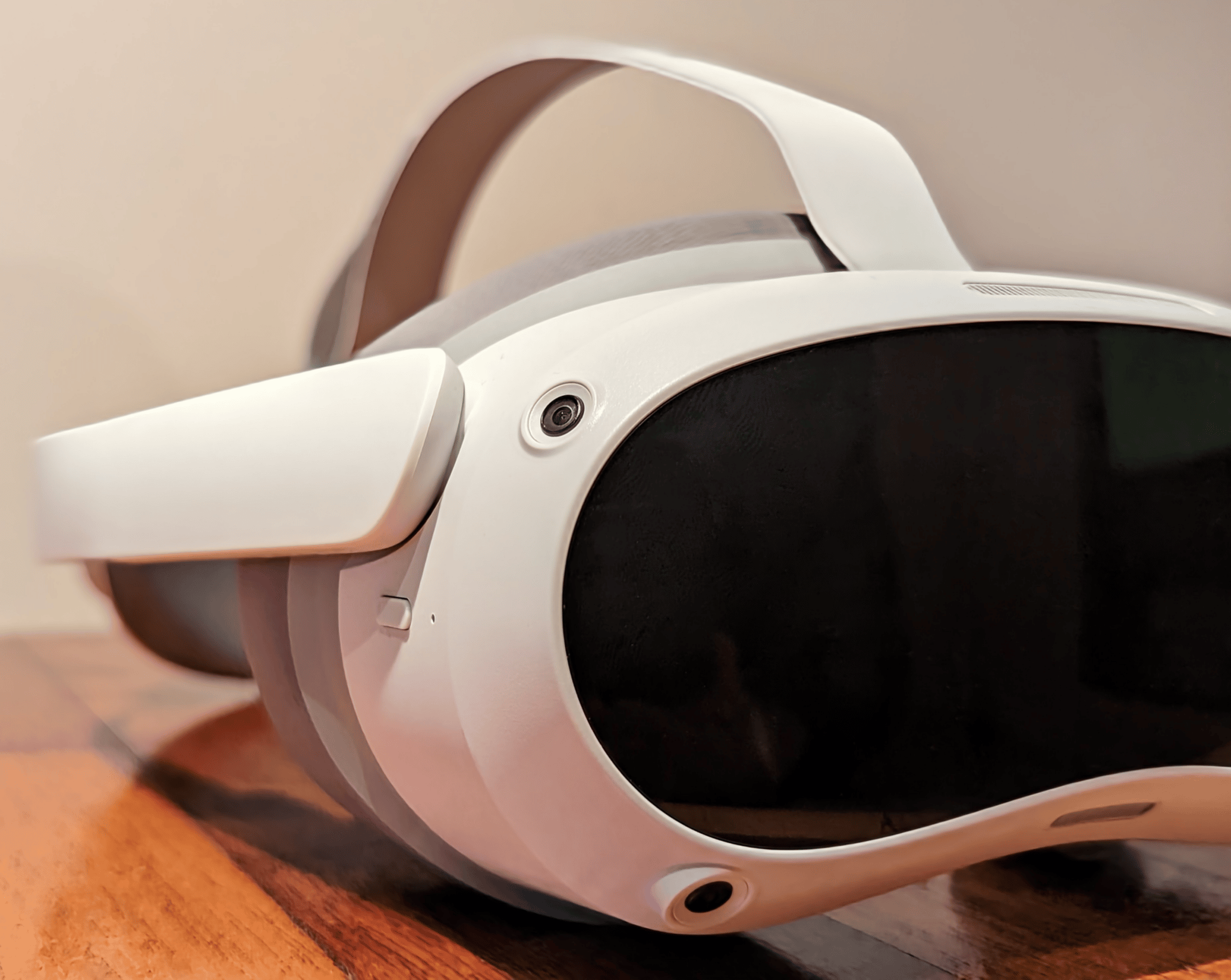
Another disappointing technical aspect of Pico 4 is that the positional tracking just isn’t as solid as Quest 2. Even in a room with good lighting & plenty of high-contrast features, there’s a tiny jitter on both the headset and controllers, and the position of both sometimes slightly shifts as if to correct accumulated drift. It’s subtle, but it makes me feel slightly sick when this happens too. Using Quest 2 in the exact same lighting, no such issue occurs and the tracking feels rock solid.
Inside-out tracking is relatively easy to ship these days, but it’s still astonishingly difficult to do well enough to feel flawless in VR. Facebook has been working on this since acquiring 13th Lab in 2014, so it may take time for Pico to catch up.
If you’re extremely sensitive to tracking quality like me I’d recommend watching for potential post-launch software updates to refine it. But most people probably won’t notice or care.
Setup & UI
Some people don’t like the requirement to use a smartphone to set up a Quest, but Pico’s setup experience shows why you probably don’t really want to do this from VR yet. Typing in your email address & desired password with tracked controllers as laser pointers is cumbersome, and means you can’t automatically save your credentials to a password manager. You then have to take the headset off to find a verification code sent via email, then put it back on to enter that code.
You need to get the Pico mobile app anyways to add payment details to buy store content, so why not do all this in an app-based setup? It’s not the end of the world, but it is a hassle.
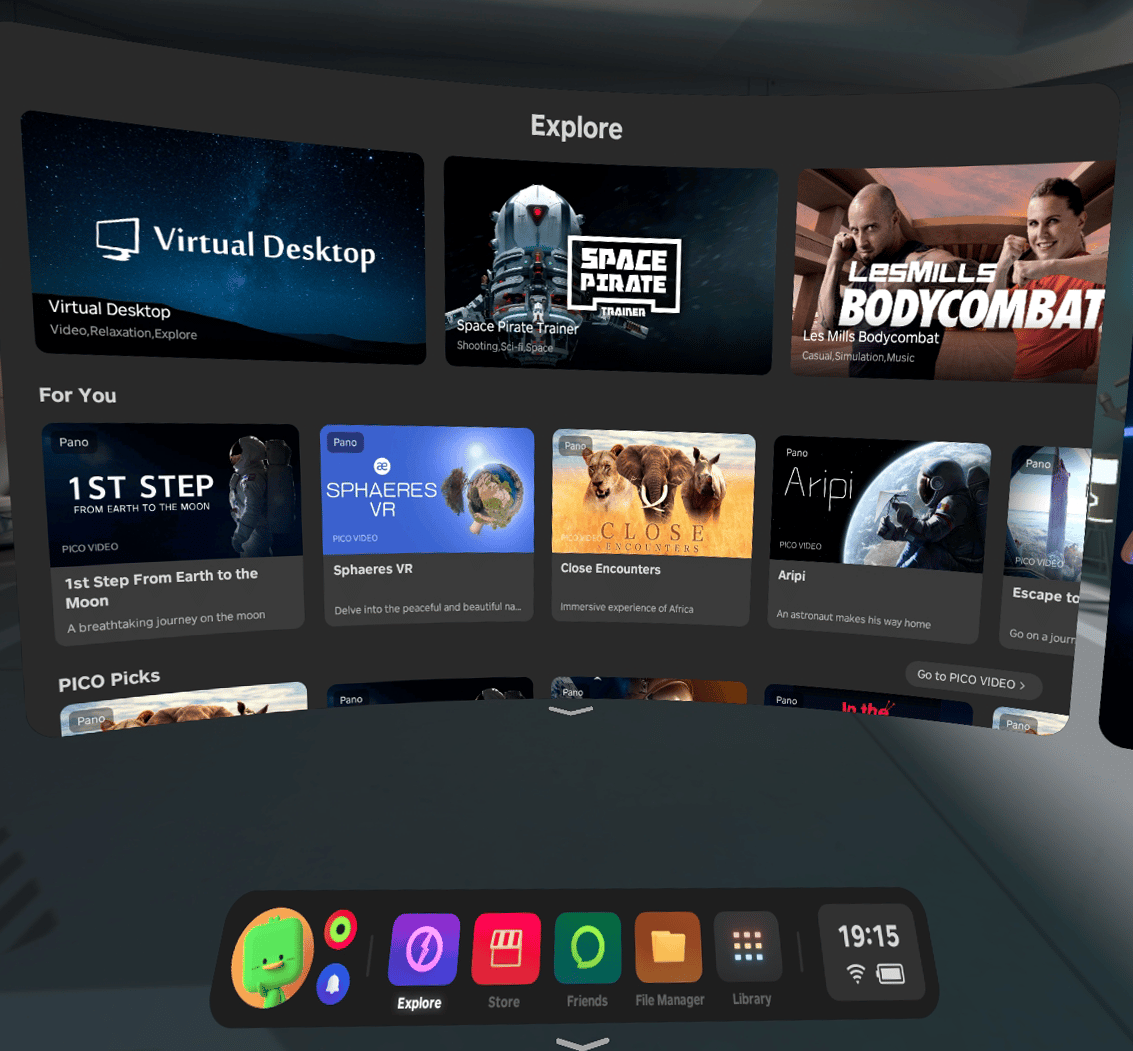
The system software inside VR is very similar to Quest. It’s clearly “inspired”, in the same sense as many Chinese Android brands are “inspired” by iOS. If you’ve tried a Quest and liked the interface, you’ll probably like Pico’s. If you didn’t, you probably won’t like this either.
It is much snappier though. Bringing up the menu while in an app is fast & smooth, with none of the juddering you often see on Quest’s menu. The downside is it feels less polished, with little touches like haptic feedback on the virtual keyboard missing. Expect the system software to change over time though.
Color Passthrough
Unlike Quest 2’s black & white passthrough view Pico 4’s is full color, and higher resolution too.
It’s a big step up visually at first glance, but there’s a major caveat. Pico 4’s passthrough isn’t depth-correct, like the original Oculus Quest until a software update it received 5 months after launch.
That’s not to say it’s completely monoscopic. There is a different perspective delivered to each eye. But this stereoscopy is faked from the single color camera in the center. The scale of the image delivered isn’t true to life and exhibits distortion over the entire view, a much worse experience than the depth-correct passthrough on Quest Pro which can exhibit distortion on specific objects in 3D space.
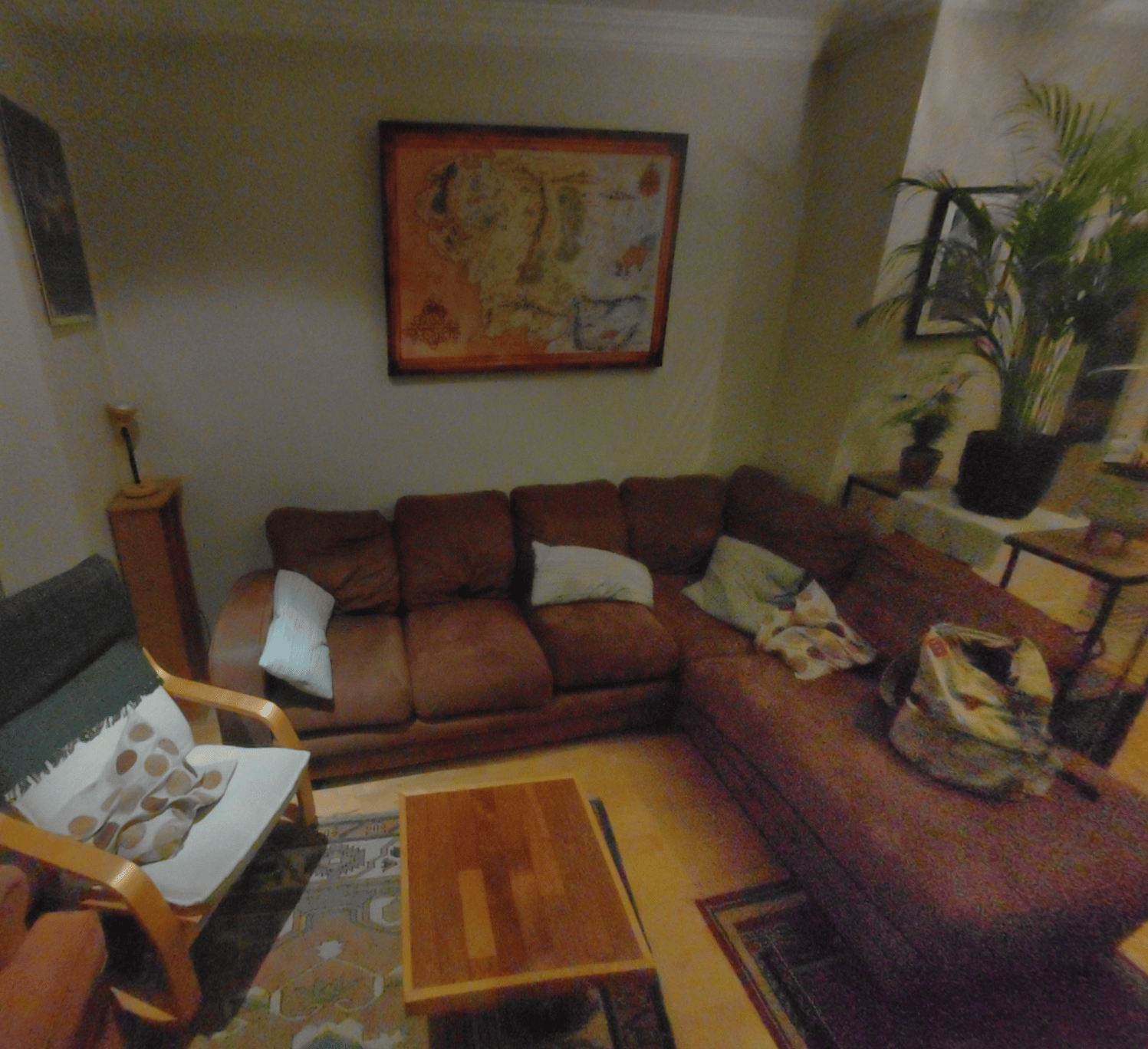
Pico 4’s passthrough was tolerable for setting up the boundary system or quickly checking my real room, but when I moved around for more than a few seconds it made me feel queasy. It just doesn’t feel right.
So barring a major software update, don’t expect Pico 4 to deliver the mixed reality experiences you’ll find on Quest Pro. Pico is pitching this as a virtual reality headset, and it’s a quarter of the price.
Controllers
Whereas Quest 2’s controllers house its infrared LEDs in a ring in front of the controller, Pico 4’s controllers have them in an arc over your hands. The advantage is that you can bring your hands much closer together without bashing together plastic you can’t see inside VR. This makes interactions like rapidly reloading a weapon far less frustrating.
But the handle shape of Pico 4’s controllers doesn’t feel quite as ergonomic. My hands feel entirely neutral in Quest’s controllers, whereas they’re ever so slightly strained in Pico’s. I suspect this will vary across hand shapes though.
The index trigger feels as solid as Quest 2’s, but the grip trigger feels a little soft and spongy.
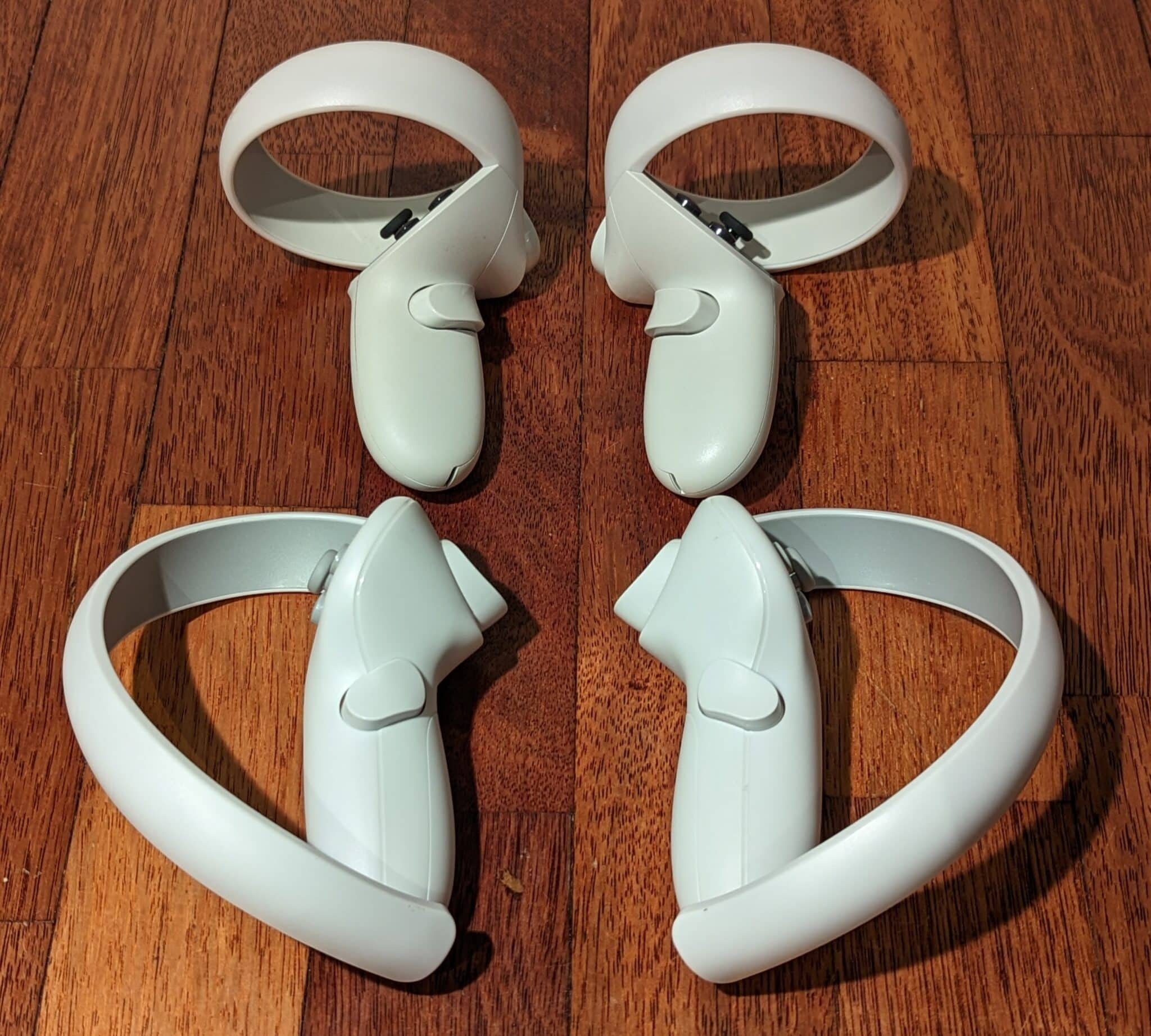
The right Pico controller has a dedicated screenshot button, and you can hold it down to start a recording. For content creators and developers this is genuinely useful – it’s a massive time saver. The downside is it’s right beside the system menu button, so you’ll find yourself accidentally pressing the wrong one from time to time.
The battery life on Pico 4’s controllers seemed roughly on par with Quest 2’s, though they require 2 AA batteries each compared to 1.
Controller-free hand tracking isn’t available on Pico 4 yet unless you enable developer mode- and thus isn’t supported in any Pico Store apps – but the company says it’s coming in a post-launch software update. Meta has been continuously improving Quest’s hand tracking with software updates though, so Pico has a tough act to follow here.
Content
Pico 4’s app store is slowly but surely filling up with many of the top Quest titles. You’ll find games like Superhot VR, Blade & Sorcery Nomad, Demeo, After the Fall, Arizona Sunshine, Eleven Table Tennis, Walkabout Mini Golf, Space Pirate Trainer, and GORN. Here’s a full list.
More titles are coming soon after launch, including The Walking Dead: Saints & Sinners, Green Hell VR, and Warhammer 40000: Battle Sister.
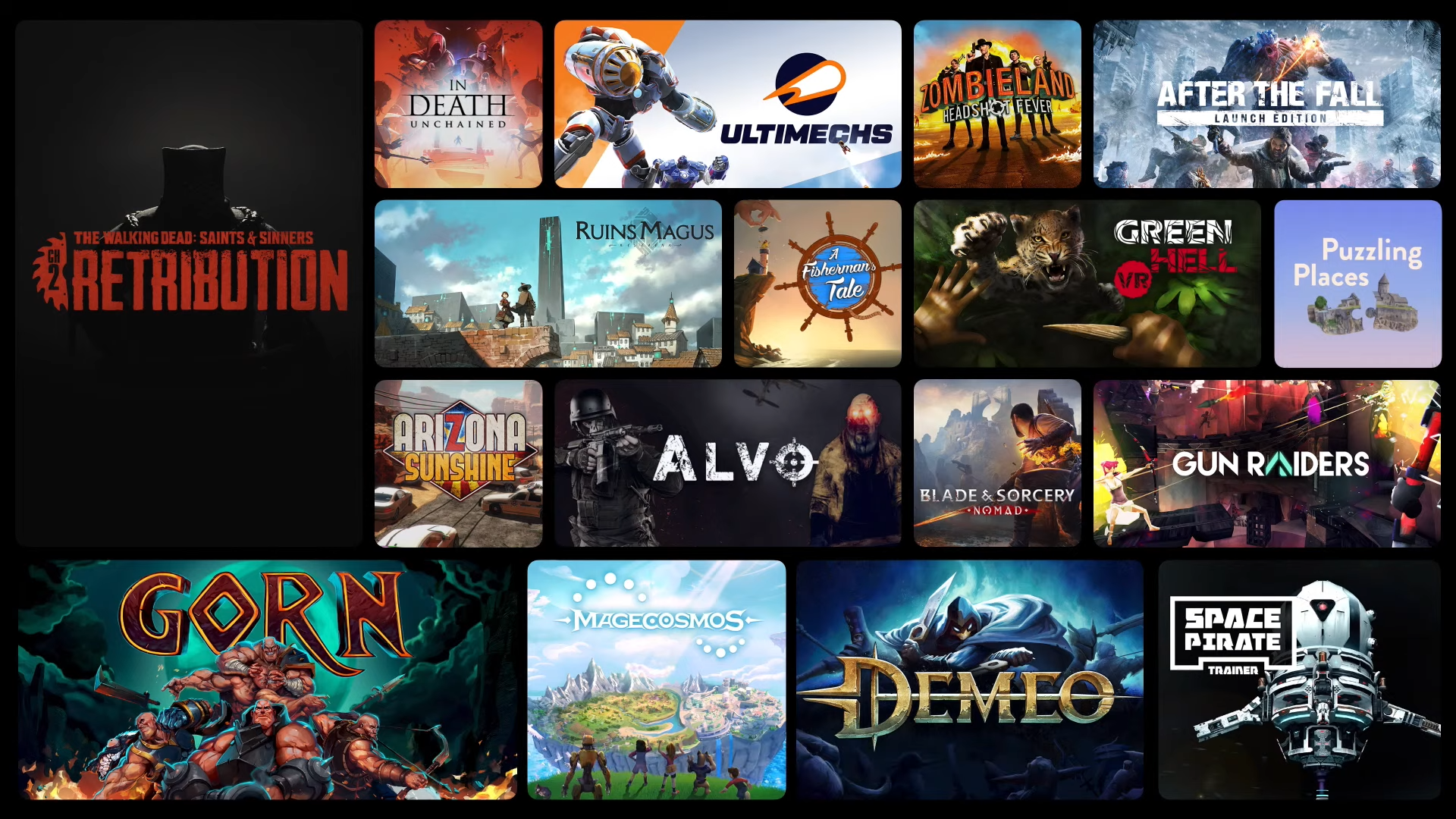
But Meta has built-up a catalog of standalone exclusives you won’t find on Pico 4 including Beat Saber, Resident Evil 4, Population: ONE, Onward, and soon Iron Man VR. Meta has acquired 8 game studios over the past 3 years but has only teased 1 new game from them, so expect a range of new Quest exclusives in coming years.
Pico is promising its own exclusives, starting with Just Dance VR next year. But as far as we know it hasn’t yet acquired studios. Time will tell how serious ByteDance really is about funding VR content.
If you own a gaming PC though, you can play Beat Saber and Onward as well as PC VR exclusives like Half-Life: Alyx and Skyrim VR via SteamVR. Like Quest, Pico 4 has built-in wired and wireless PC VR streaming. It doesn’t work quite as well as Air Link, with more noticeable occasional stutters. But thankfully Virtual Desktop is also available on the Pico store, and it works just as well as on Quest.
Conclusions
Pico 4 offers sharper, wider and taller lenses in a slimmer & lighter design that makes Quest 2 look outdated by comparison. But the content ecosystem is far less developed, the software isn’t as refined, and the processor can struggle to keep up with higher resolution.
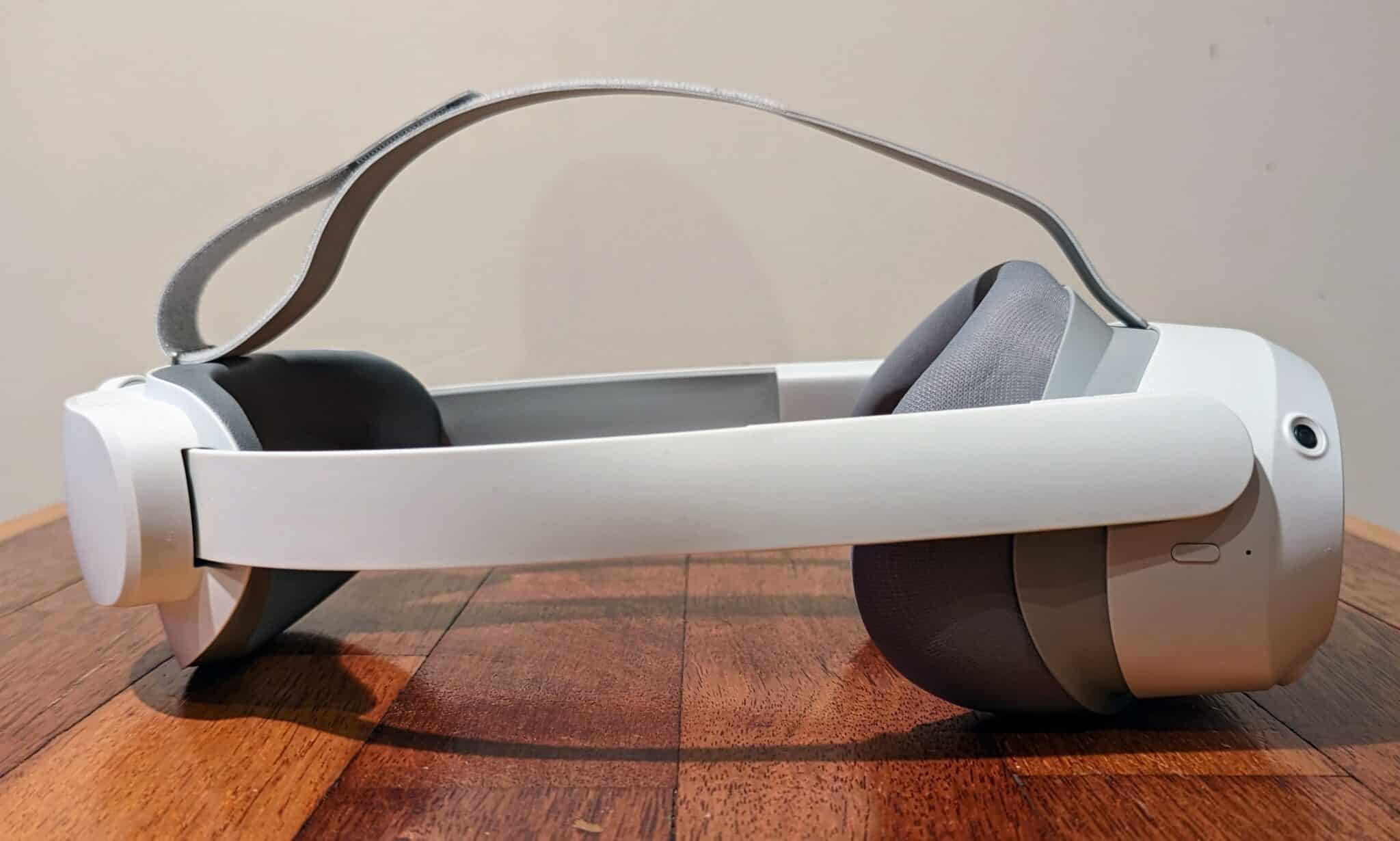
Assuming your IPD is above 62mm, the decision to buy Pico 4 or Quest 2 comes down to an exceedingly difficult question: do you want ByteDance’s superior hardware, or Meta’s superior software tech & content library?

